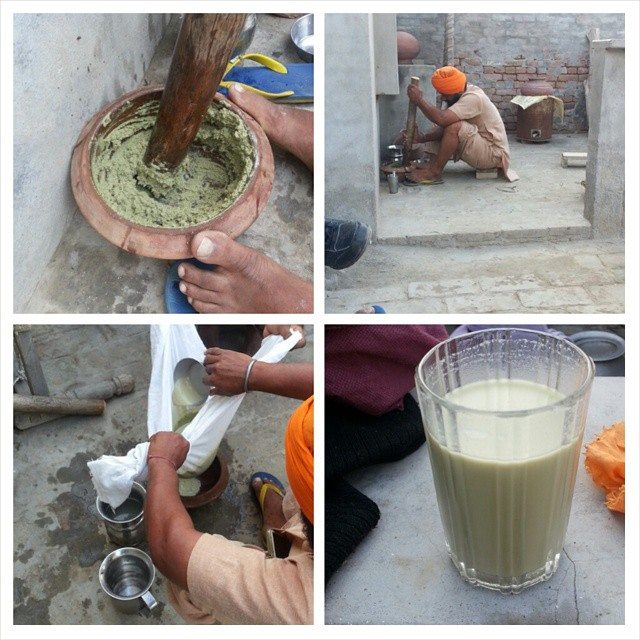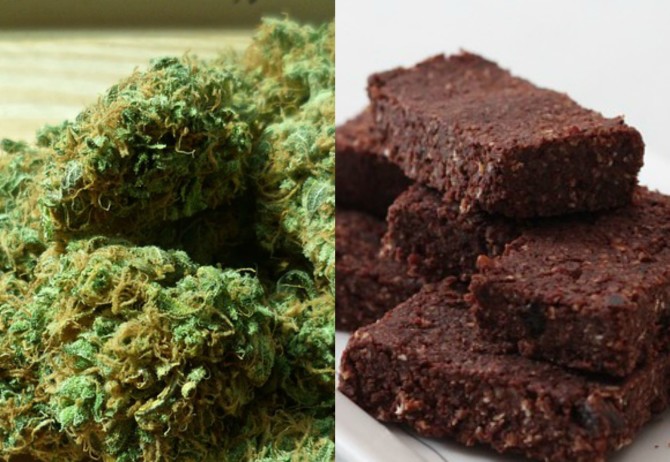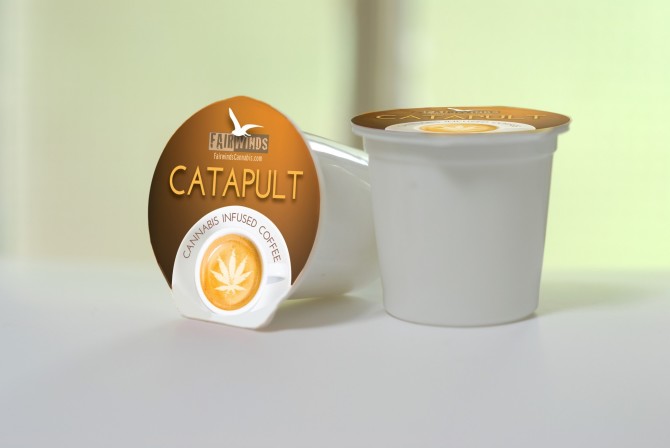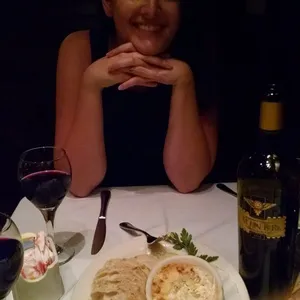Though I didn’t know it yet, but I was first exposed to weed when I was a child watching Scooby Doo, Where Are You!. Shaggy and Scooby were my first stoner friends, and way more active than I’ve found most stoners to be.
But the first time I heard about weed edibles was in college when a few of the girls on my hall decided to buy “special” brownies. They were really entertaining for about five minutes and then super boring — besides, Glee was on.
When most people think of weed edibles, they immediately associate it with brownies. But edibles have a wide and diverse history that date as far back as the 10th century in India.
Bhang was, and still is, a popular drink in the Indian subcontinent (shots, shots, shots). It’s a mixture of pulverized weed, ghee (clarified butter), milk and spices. Of course, back then it was used not as a drug, but as a sleep aid and appetite enhancer (not much has changed).

Photo courtesy of Marcusprasad
Weed was not just a drink for Indians. Always late to the party but never to be outdone Europe was busy concocting their own recipe. On Honorable Pleasure and Health, published in 1474 Italy, detailed a recipe for what roughly translates as “cannabis nectar.”
But Europe and India have a more lackadaisical approach to marijuana. In the US, weed has always been a problem child, much like I was in the second grade. It was a hard year, guys — don’t judge.
It wasn’t used as a recreational drug until the 1910’s when an influx of Mexican immigrants introduced the smoking of marijuana to the US. Before that, it was mostly used as a medicinal product.
Thus, marijuana was linked to the new Mexican communities and exacerbated American’s xenophobia, especially during the depression when resentment was rampant. At the root of America’s long-held belief that marijuana is highly dangerous is stubborn xenophobia and racism, with a dash of science. Which I’m pretty sure is the same root that’s propelling Donald Trump to the top of the polls.
It is ironic, then, that the person to really take weed and roll with it (pun intended) was Alice B. Toklas, an American expat living in France. She is most famous for being the girlfriend of Gertrude Stein (in the early 1900s, an unfriendly era for the LGBT community) and her hash brownies.
From what I’ve read, their living room was the early version of the basement in That 70’s Show, except the stoners were Ernest Hemingway and their conversations were actually intelligent.
Alice’s recipe for hash brownies did not include hash though, or even chocolate. Instead she smashed and balled up cannabis sativa, mixed it with fruit and spices, and that was it. This recipe has more in common with those no-bake energy balls you see everywhere on Pinterest than any brownie.

Photo courtesy of loudmouthnews.com and sodahead.com
What’s even more unusual is she didn’t use heat, which most people say is what activates the THC in marijuana. Apparently you can get some of the benefits of weed by eating it raw if you eat a lot of it. However, it’s probably not very appetizing since you’re eating what basically amounts to your mom’s living room fern. I hear they’re delicious with smushed fruit and spices, though.
The infamous pot brownie didn’t really become prominent until the late 60’s with its use in the movie I Love You Alice B. Toklas. The main character eats a pot brownie, leaves his fiancé for a the hippie blonde (because they have more fun), and then leaves the blonde for the fiancé. Apparently, Alice’s brownies also made you a douche bag.
Hippies were all about these pot brownies and, soon enough, they started baking weed into everything. Space cakes and cookies were all the rage in the 70s and 80s.
So American experimentation with weed edibles started off with the humble brownie, expanded itself to include most baked goods, and stalled at the end of the psychedelic eras.
But now, we are seeing a whole new age of weed edibles. No longer is pot confined to the bakery — it is being brought to the forefront of a booming legal marijuana business. A business that is eager to expand its market in any way it can.

Photo courtesy of Pinterest.com
If you happen to live in the four states (I’m ignoring D.C. because of all the pesky federal laws that make open use tricky) that have legalized recreational marijuana, you can have your weed in just about anything at this point.
Already familiar in the form of brownies or other baked goods, weed can be in lip balm, tea, gummy candy, caramel, peanut butter and jelly, pizza sauce, and anything else you can think of. It’s a stoner’s world and we’re just living in it.
It’s in your coffee: Catapult Coffee, from Fairwinds Manufacturing already has a line of weed-laced coffee that they’ve packaged in K-Cups.

Photo courtesy of forbes.com
A company called Evergreen Herbal has been selling out of their 4.20 chocolate bars since they began production, and they aren’t the only ones putting weed in chocolate. Kiva, a California-based company, has bars that break off, like your regular old Hershey’s bar, but they are portioned by dosage so you know just how high you’ll get.
It’s in our ice cream, like the kind produced by Cannabis Creamery; it’s in our soda and lemonade, with products like Canna Cola and Dixie Elixirs. That’s just a small sample of the edibles market. Basically, it’s everywhere.
The legal marijuana business is doing everything they can to expand their customer base to not just the practiced potheads, but also those, like me, whose definition of pothead has more to do with drinking a pot of coffee than weed.
With the legalization of marijuana in certain states, chefs have started experimenting with marijuana as an herb, not just a hallucinogen. And I don’t mean herb as in, “Dude, I got some herb!” I’m talking about herb like I would talk about dill or parsley.

Photo courtesy of youtube.com
I’ve already got dibs on the Cupcake Wars spin-off Weed Wars. It’s gonna be big. Weed Wars, tell your friends.
Some restaurants, such as Hapa Sushi in Colorado, have started offering weed pairings to go with their California rolls. Where I imagine the waiters are giggling as they recommend the 2014 Ghost Train Haze to go with your volcano roll.
There are even cookbooks that detail how to use weed in everyday recipes — pot pie anyone? Sweet Mary Jane and Cannabis Cookbook are just two of the books that focus on weed-infused recipes.
If it becomes legalized everywhere, there is no end to the scope of products that marijuana companies could create. I wouldn’t be surprised to see an entire aisle in your local grocery store dedicated to cannabis-infused edibles. Nor, would I be surprised to find my neighbor in that aisle. It looks like weed is here to stay (and grow).


